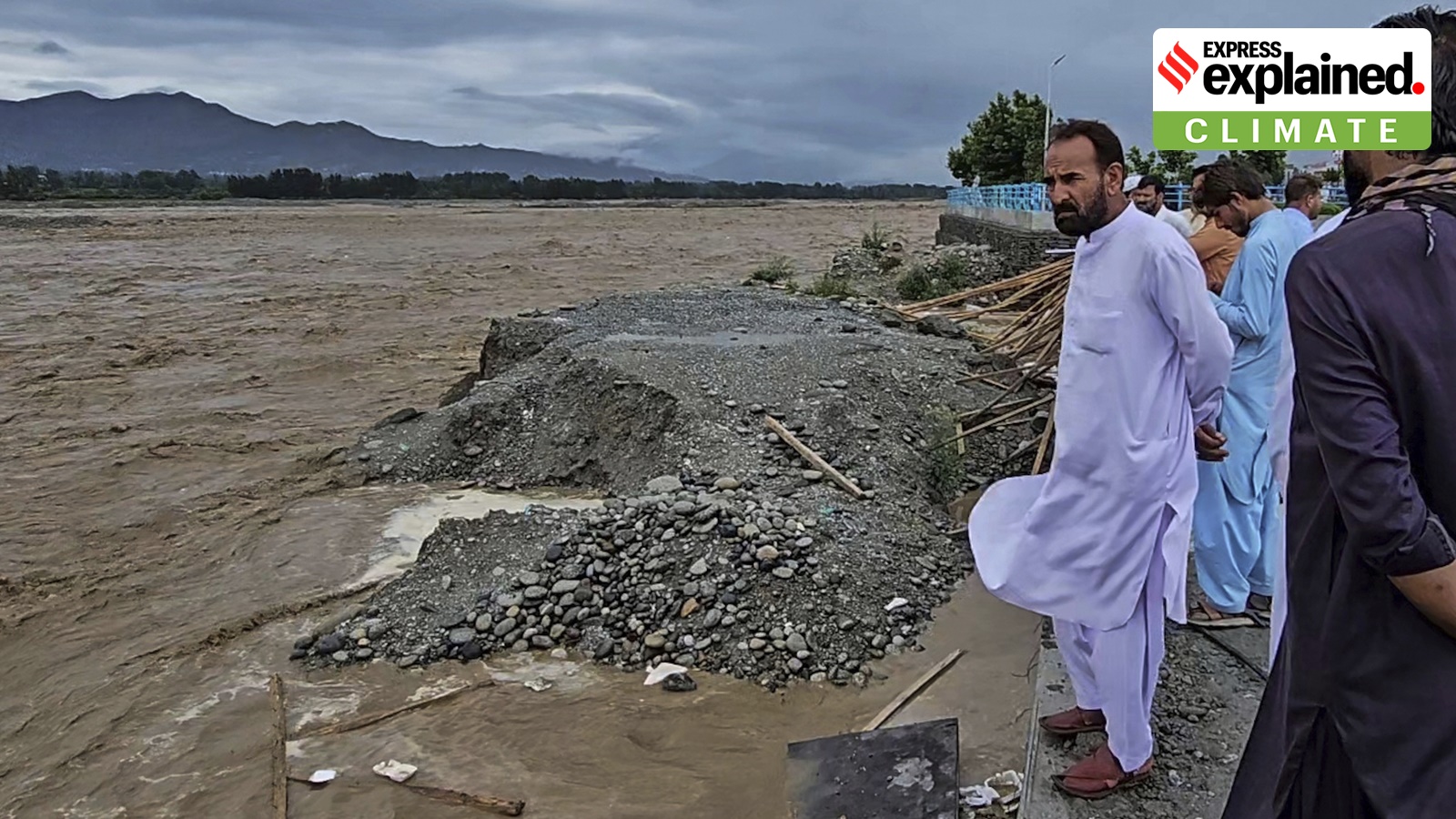As many as 32 people were killed in different parts of Pakistan in flash floods caused by heavy rain over Friday and Saturday. The country’s National Disaster Management Authority (NDMA) has issued alerts for glacial lake outburst floods (Glof), urban flooding, and flash floods across various regions over the next 24 to 48 hours, the newspaper Dawn reported.
Pakistan is among the most vulnerable countries to climate change across the world. Its government’s Biennial Transparency Report, submitted to the United Nations Framework Convention on Climate Change (UNFCCC), says, “Pakistan has been ranked as the most climate-vulnerable country globally in 2025, bearing immense social and economic costs from recurring climate-induced disasters…”
What makes Pakistan so vulnerable to climate change, and what is worsening the problem? We explain.
Not just natural causes
Story continues below this ad
Pakistan’s geography plays a part in making it vulnerable to climate change. The country is home to over 13,000 glaciers, according to an Al Jazeera report. As global warming leads to melting of these glaciers, Pakistan’s risk of floods and flash floods increases. Frequent heatwaves and erratic rainfall, leading to both floods and droughts, are other challenges Pakistan shares, with much of north India. The country is also prone to earthquakes.
Yet, apart from natural causes, what makes Pakistan’s situation worse is chronic mismanagement and poor policy decisions.
The incidents over this weekend are a case in point — in Punjab, most of the rain-related deaths were due to roof collapses, as reported by Dawn. In Swat, where tourists having breakfast by the Swat river were swept away, locals staged protests, claiming that rescue teams did not arrive in time.
Then is the fact that civic services are not very well-planned, or at all available to a vast section of the population. Rapid migration of people from the rural to urban areas in search of jobs has led to a sprawl of slums. UN Habitat’s 2023 report about Pakistan says that “over 50% of the urban population lives in slums or informal settlements known as katchi abadis.”
Story continues below this ad
Poor urban planning leads to issues of water-logging, leading to more flooding, and increased vulnerability to the vagaries of the weather, such as the roof collapses mentioned earlier. Heavy density of population in cities also contributes to the heat island effect, where urban areas are hotter than rural regions, because of concrete buildings absorbing heat during the day and releasing it at night, fewer trees, and more energy emission.
“Air pollution is on the rise in urban areas due to multiple factors, including environmental problems, inefficient energy use, a rapid increase in the number of vehicles, industrial activities without adequate air emission control, and the open burning of solid waste, including plastic. These factors collectively contribute to the deterioration of ambient air quality and the well-being of the population in Pakistan,” the UN Habitat report says.
Leaders within Pakistan have highlighted that the government refuses to treat climate-related issues with the urgency they deserve. Sherry Rehman, who was the Union minister of Climate Change till 2023, posted on X about the flash flood deaths on June 27, “Not only did the provincial administration fail to understand the magnitude of the crisis, I keep repeating, so did denialist tourists. This is endemic to a system that thinks that climate change can just be put on a back burner, or that crises will not multiply in scale and intensity.”
Pakistan’s demand for green funds
In May, the International Monetary Fund approved a Resilience and Sustainability Facility (RSF) of about US$1.4 billion for Pakistan. However, the country has repeatedly demanded more aid, and has claimed it can’t do much to help matters till more funds land.
Story continues below this ad
“I don’t look at this as a crisis of climate. I look at this as a crisis of justice and this lopsided allocation that we are talking about,” Pakistan’s climate change minister, Musadiq Malik, told Al Jazeera. “This lopsided allocation of green funding, I don’t look at it as a funding gap. I look at it as a moral gap,” he said.
The report to UNFCCC makes the same point, “Despite contributing less than 1% of global emissions, Pakistan is acutely vulnerable to climate impacts,” it says. “By 2030, the country estimates needing around USD 200 billion to fully implement mitigation actions alone, with broader climate-resilient development requirements of USD 348 billion. However, climate finance received so far, primarily through the Green Climate Fund, Global Environment Facility and Adaptation Fund, remains insufficient, underscoring a critical gap between support needed and received,” it adds.

